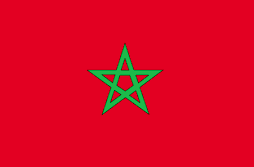Unemployment Rate: 9.50%
Labor Force Participation Rate: 32.39%
Of the Participation Rate:
28.7% Female
71.3% Male
derived from NationMaster.com 2005
The most widely available jobs in Morocco are agricultural jobs. 45% of the labor force participates in farming, 20% is involved with industrial jobs, and 35% have service jobs. Industrial jobs include: off shoring, car production, aeronautics, electronics, textiles and leather, and agricultural business (Touahri. 2009). Although land can often be dry because of the unpredictable droughts, farming is one of the most popular occupations in Morocco because a high education isn’t needed to be a farmer and only 52.3% of the Moroccan population is literate. Service occupations, such as tourism jobs, are also popular because many service jobs don’t need high levels of education. Men make up over 70% of the labor force because they are more educated and women are seen as inferior (Moroccan Culture Series: Women). 98% of the Moroccan population is Muslim and follow strict Muslim laws, therefor many women are seen as submissive to their husbands. On average, Moroccan men stay in school for two years longer than the 39% of women who go to school, causing men to be more qualified for certain occupations and causing more men to have an opportunity at an education.
As of right now Morocco is experiencing positive growth, after a period of cyclical unemployment, most likely because of King Mohammed VI who came to the throne in 1999. Before Mohammed VI came to the throne, the government, under rule of King Hassan II, was thought to have been corrupt because of his autocratic rule where he refused to take risks at changing Morocco for the populations well-being (Meldon. 1999). In 2003 the unemployment rate was 19%, but now it is estimated to be 9.5%. This growth in employment can be contributed to the actions of King Mohammed VI and the Moroccan Government who, for example, established the National Pact for Industrial Emergence which is dedicated to investing almost $3 billion towards training, human resources, and other investments to make Moroccan industry more prosperous (Touarhi. 2009).
Works Cited
Meldon, Jerry. "Our Man in Morocco." Third World Traveler. Sept. & oct. 1999. Web. 10 Dec. 2009. <http://www.thirdworldtraveler.com/Middle_East/OurManMorocco.html>.
"Moroccan Culture Series: Women." Free French Lessons - Learn French at About - Learn, Speak, Teach French. Web. 10 Dec. 2009. <http://french.about.com/library/travel/bl-ma-women.htm>.
"NationMaster - Time Series Labor force participation rate, female % of female population ages 15-64 Morocco." NationMaster - World Statistics, Country Comparisons. Web. 10 Dec. 2009. <http://www.nationmaster.com/time.php?stat=lab_for_par_rat_fem_of_fem_pop_age_1564-female-population-ages-15-64&country=mo-morocco>.
Touahri, Sarah. "Industrial pact to create 220,000 jobs in Morocco by 2015 ()." Magharebia.com. 19 Feb. 2009. Web. 10 Dec. 2009. <http://www.magharebia.com/cocoon/awi/xhtml1/en_GB/features/awi/features/2009/02/19/feature-02>.










No comments:
Post a Comment